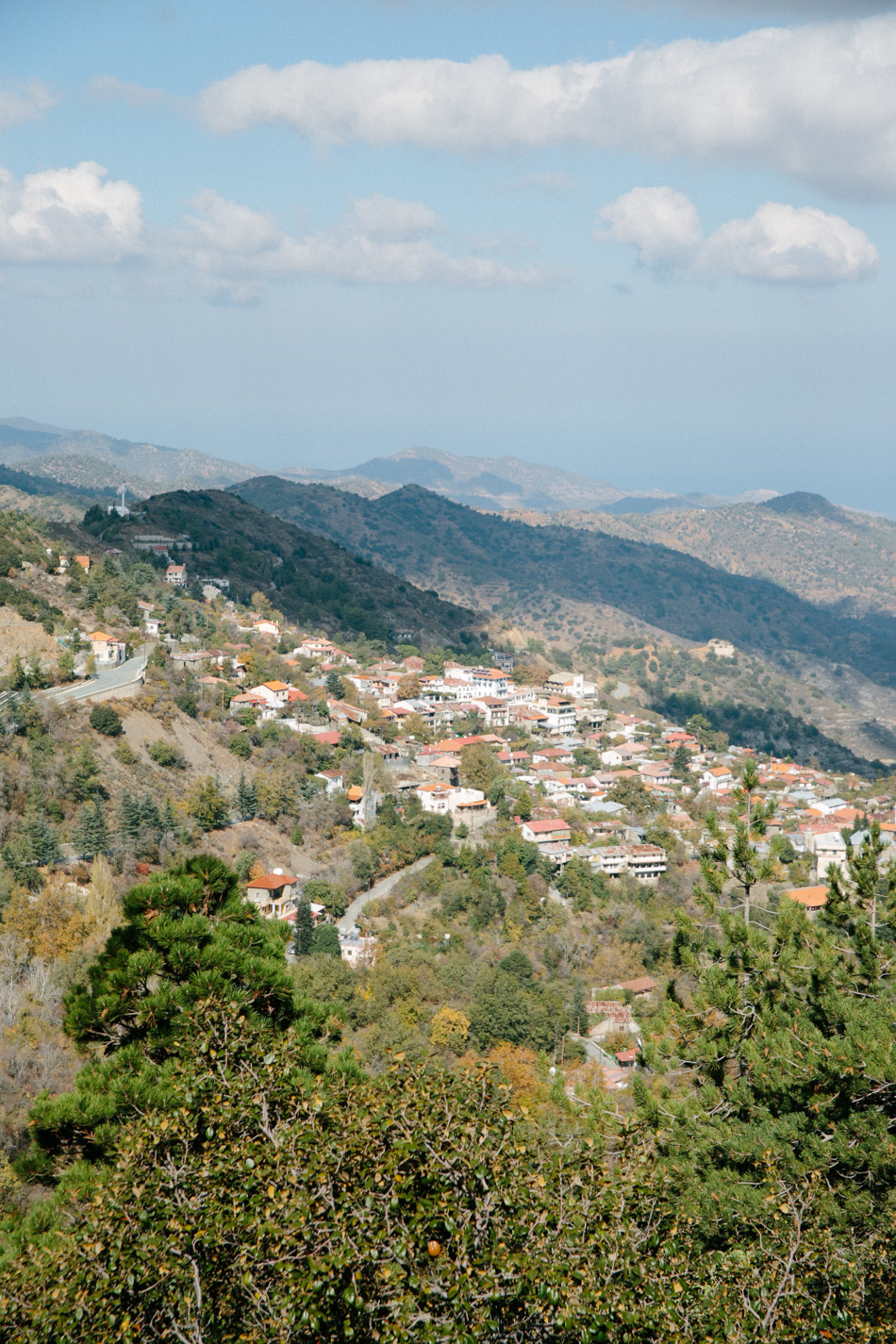Once you see the breathtaking natural landscapes on this Mediterranean island, you’ll understand why the people of Cyprus are so religious.
There’s something for every nature lover, from white beaches and a crystal clear coastline to evergreen wine villages and glorious mountain ranges.
The locals of Cyprus spend a lot of their time outside, taking in everything that the diverse natural landscape of their island has to offer and they go to great lengths to protect its beauty.
Beyond the Beaches: The Green Side of Cyprus
Contrary to popular belief, the gorgeous glimmering beaches aren’t the only natural attractions that the island has to offer.
You don’t have to get into the sparkly water or come near the fluffy sand to absorb Cyprus’ natural scenery.
There are many other natural spaces that you could explore in Cyprus, like shimmering waterfalls, exciting nature trails, ancient forests and woodlands, interesting coves, gorgeous mountains, and historical wine villages.

The Troodos Mountains: Cyprus’s Elevated Beauty
The Troodos Mountains are a major attraction for many locals and international tourists. Apart from the beaches, it may just be the most beautiful natural feature of Cyprus. The mountain is alluring and majestic, with an abundance of flora and fauna and ample hiking opportunities.
Some of the bird species living in and around the Troodos Mountains include the Cyprus Moulton, Griffon Vulture, Bonelli’s Eagle, Cyprus Wheatear, Cyprus Warbler, and the Scoops Owl. Animal species include the Cyprus Mouflon and Cyprus Spiny Mouse.
There are also many reptile and insect species creeping around, like the Paphos Blue Butterfly, Cyprus Meadow Brown Butterfly, Cyprus Grayling Butterfly, Cyprus Water Frog, Troodos Lizard, and Cyprus Whip Snake.
Out of the 750 plant species that live and grow on the Troodos Mountains, some unique plants that you may encounter during a hike include the Oriental Plane Trees, the Oriental Alder, the White Willow, the Bay Laurel, and the Nerium Oleander. What’s more, the mountains are also home to many Wildflowers, Paperflowers, Bermuda Buttercups, Natal Plums, Common Lantana, and Red Frangipani.

Akamas Peninsula: The Untamed Wilderness
The Akamas Peninsula in Cyprus is completely protected from development by man.
It has an exceptionally rich biodiversity and many of the island’s endemic animal, bird, and plant species can be found here. There are many beaches in the Akamas Peninsula, as well as cliffs, plains, mountains, and forests.
The array of birds that live in the peninsula includes more than 160 species and one-third of Cyprus’ 128 endemic plant species have made the area their home.
The peninsula is so untouched that there are no paved roads in the entire area and you’ll need to explore it by taking an organized tour. You could also go on a fun and informational hike by yourself or try mountain biking.

Salt Lakes and Wetlands: Where Ecosystems Thrive
There are many big and small ecosystems luring in the shadows in Cyprus. Some areas are very rich in animal and plant species and their ecosystems are crucial to the island.
Those ecosystems typically exist in the many wetlands of Cyprus and the island’s two salt lakes, namely Larnaca Salt Lake and Limassol Salt Lake.
Native Flora: Plants You Won’t Find Anywhere Else
Cyprus is home to many endemic plants that play a crucial role in the island’s ecosystems. Here are some examples of Cyprus’ native flora:
Cyprus Bosea
The Bosea cypria is endemic to Cyprus and it flowers from April to July. During flowering time, they carry small flowers and globose red berries but they are typically evergreen. These plants are considered shrubs that fall in the Amaranthaceae family and they get between 1 and 2 meters tall.
Cyprus Cedar
The Cedrus brevifolia is a coniferous tree that forms a part of the Cedrus genus. You’ll find this tree in the Troodos Mountains as it’s endemic to Cyprus. The bark is silvery-gray and the tree grows up to 25 meters tall while standing strong in up to 12 meters of width.
Cyprus Tulip
The Tulipa cypria is a gorgeous red bulbous herb. The plant doesn’t grow taller than 40 cm when in blossom and it typically flowers in March and April. These plants are hardy and they thrive in warmer climates. You may have heard of this plant species being called by its nickname, which is Eye of the Sun.
Cyprus’ Fauna: Meet the Locals

You’d be surprised to learn that there are just as many animals and creatures living on the island as there are human locals if not more.
There are many unique species that find themselves living on one of the most beautiful islands in the world, like:
Cyprus Mouflon
Cyprus’ biggest animal is considered a wild sheep that’s native to this Mediterranean island. The scientific name for this animal species is Ovis Orientalis Ophion and it roams around Paphos’ mountains and forests.
The Mouflon appears on ancient pottery pieces and ancient vases, which suggests that the species has been living in Cyprus for thousands of years. Today, it can be seen as a symbol of Cyprus and you’ll find it on Cypriot banknotes, coins, and stamps.
Cyprus Spiny Mouse
This rodent species, scientifically known as the Acomys Nesiotes, is endemic to Cyprus.
You’ll find this little guy looking for food in arid areas around the island but you’ll have to look very carefully because they are exceptionally rare.
Underwater Marvels: Cyprus’ Sea Life
The water surrounding Cyprus is exceptionally rich in marine species. Whether you go scuba diving, snorkeling or visit a local aquarium in Cyprus, you are sure to encounter some rare or common marine species.
The island is home to a very big family of sea turtles and the very rare Mediterranean monk seal.
If you look closely, you may see pen shells, sea breams, sea cucumbers, or sea sponges enjoying the clean water of the Mediterranean Sea. On the larger side and somewhat deeper in the ocean, there are barracudas, squid, and octopi families going about. On the ocean floor, the stingrays are swimming around with trumpetfish, damselfish, and amberjacks just above them.
The marine species that prefer to be seen from land by taking a break from the water and catching some air are flying fish and the occasional dolphin.
Snorkeling and Scuba Diving Hotspots
If you really want to explore Cyprus’ marine life, there are some prime snorkeling and scuba diving hotspots situated around the island. So, dive in and get to one of these spots for a life-changing experience.
Scuba hotspots include:
- White River
- Protaras
- Manajin Island
- The Zenobia Wreck
- The Copper Wreck
- The Chapel Dive Site
- The Amphorae Caves
Snorkeling hotspots include:
- Coral Bay
- White River Beach
- Manolis Bay
- Baths of Aphrodite Beach
- Fig Tree Bay
- Konnos Beach
- Cyclops Cave
- MUSAN (Museum of Underwater Sculpture Ayia Napa)
- The Cape Greco National Park
National Parks and Nature Reserves: Preserving Cyprus’ Beauty
As mentioned before, the locals of Cyprus go to great lengths to protect and conserve the natural landscapes that Mother Nature has given them. Here are some national parks and nature reserves that aim to conserve Cyprus’ natural beauty:
Troodos National Forest Park
This national park is Cyprus’ most visited park and it takes up more than 9,000 hectares of the Troodos Mountains.
There are four nature reserves located within this national park and three campsites to stay the night. For the hikers, there are ten nature trails available that cover more than 57 km of the park.
Petra tou Romiou National Forest Park
You’ll find Aphrodite’s birthplace, one of Cyprus’ most gorgeous beaches, in this national park. The park is much smaller and it covers only 350 acres of woodland and coastal areas.
Macheras National Forest Park
This park is one of the most unspoiled natural areas on the island. It’s frequently referred to as the little brother of the Troodos National Forest Park and it’s located right at the end of the Troodos Mountain range. The heavily forested 111,000-acre national park is mostly empty.
Activities for the Nature Enthusiast
If birdwatching and sipping wine while absorbing the landscape sounds boring, there are many adrenaline-channeling activities that you can take on during your visit to Cyprus, like mountain biking or hiking the many trails of the Troodos Mountains.
You could also enjoy the open air with paragliding or try your luck at some water activities like skiing and sport fishing. If you prefer to stay seated on an exhilarating ride through nature, there are many quad, buggy, and ATV tours as well as Jeep safaris.
The Endless Natural Wonders of Cyprus
If you’re still not convinced that Cyprus is a nature enthusiast’s playground and a paradise for many bird and plant species, you better take a trip to the island and see the glory of Cyprus’ natural wonders for yourself.
Plus, there are so many man-made things to explore on your trip to admire nature, not to mention the wines and cuisine that you should try!
Related Articles
- Cyprus Bucket List: 7 Natural Wonders You Shouldn’t Miss
- Fresh Snow in Troodos, Cyprus
- Sunset Picnic in Akamas, Cyprus
- Mini Expedition in Akamas Peninsula, Cyprus
- Visiting the Blue Lagoon in Cyprus: A Guide by a Local
- Hiking the Aphrodite Trail in Akamas, Cyprus
- Sunset in Akamas, Cyprus
- Hiking in the Avakas Gorge, Paphos (Cyprus)
- First Snow in Troodos, Cyprus
- Cyprus Waterfalls: The Natural Wonders You Need to See
- From Lara Beach to Blue Lagoon, Cyprus [2024]
- Baths of Adonis in Paphos, Cyprus
- Quadbike Adventure in Akamas
